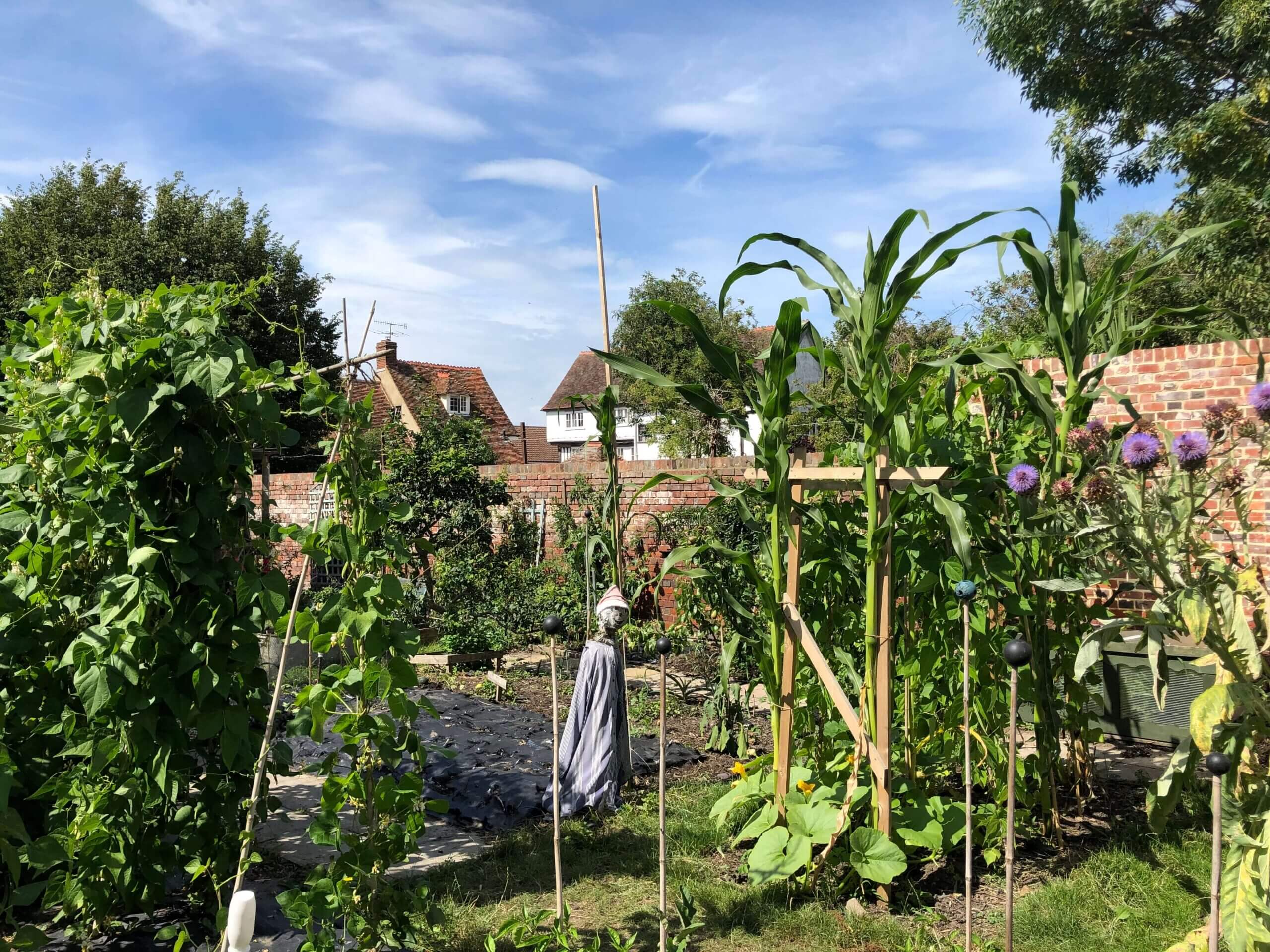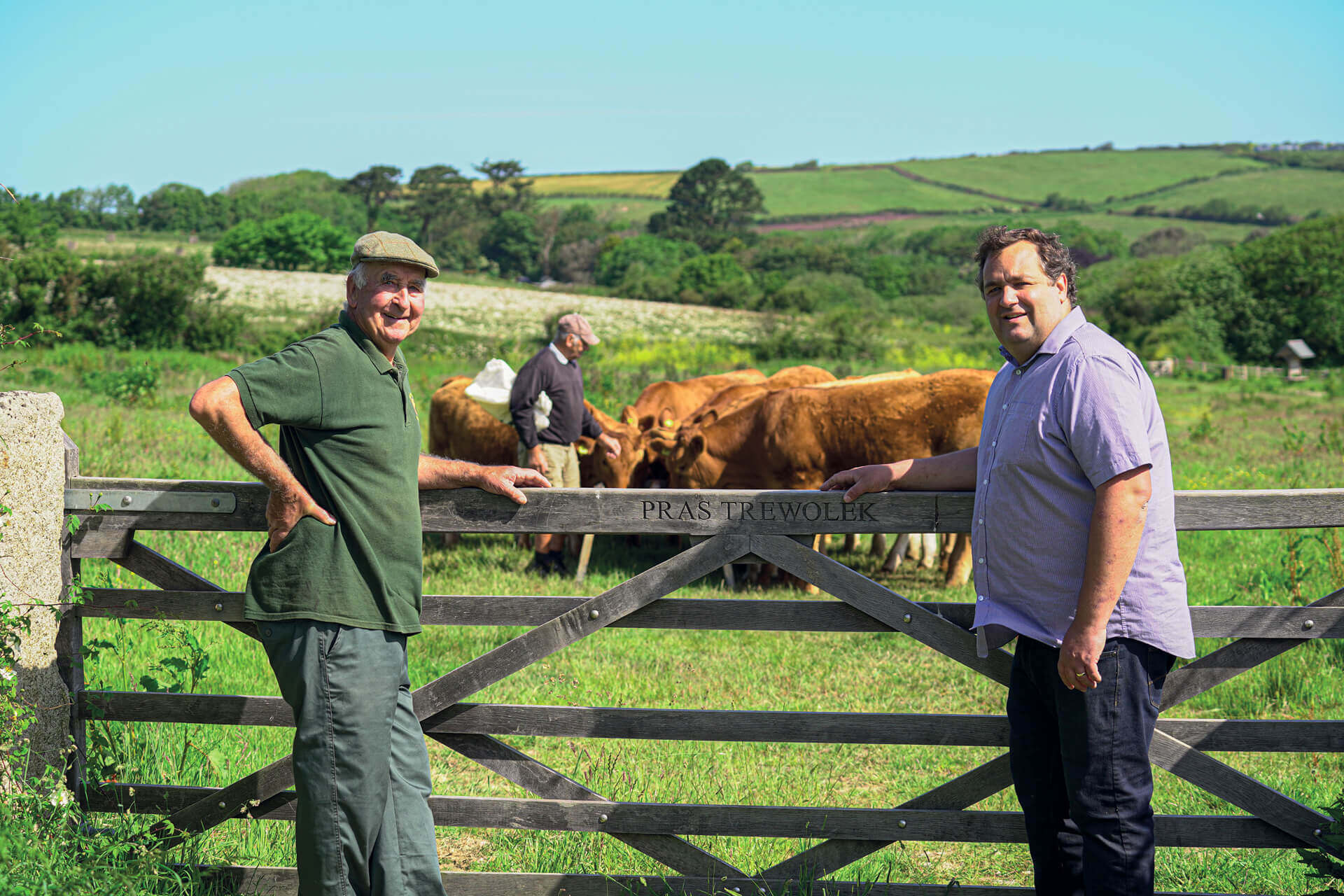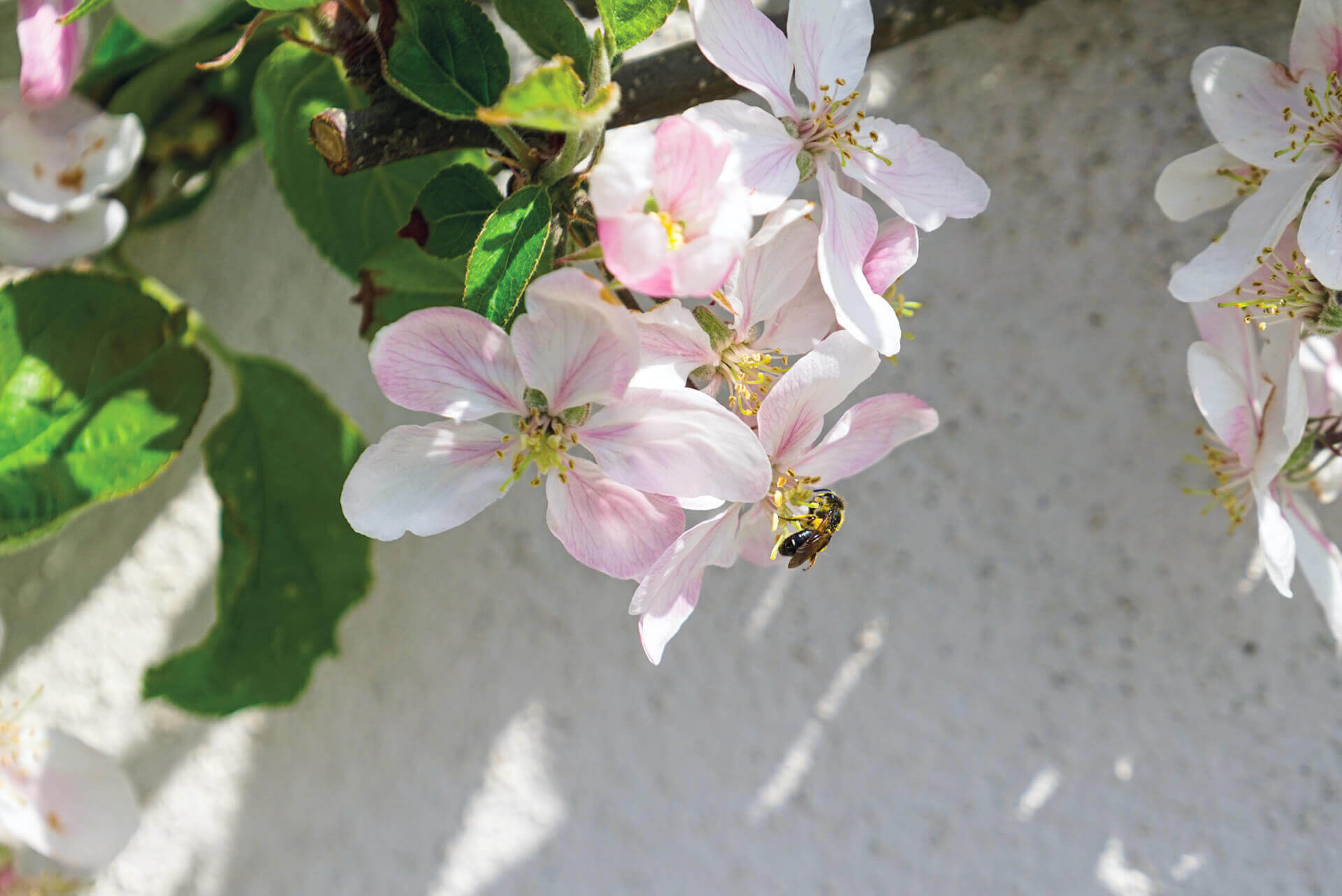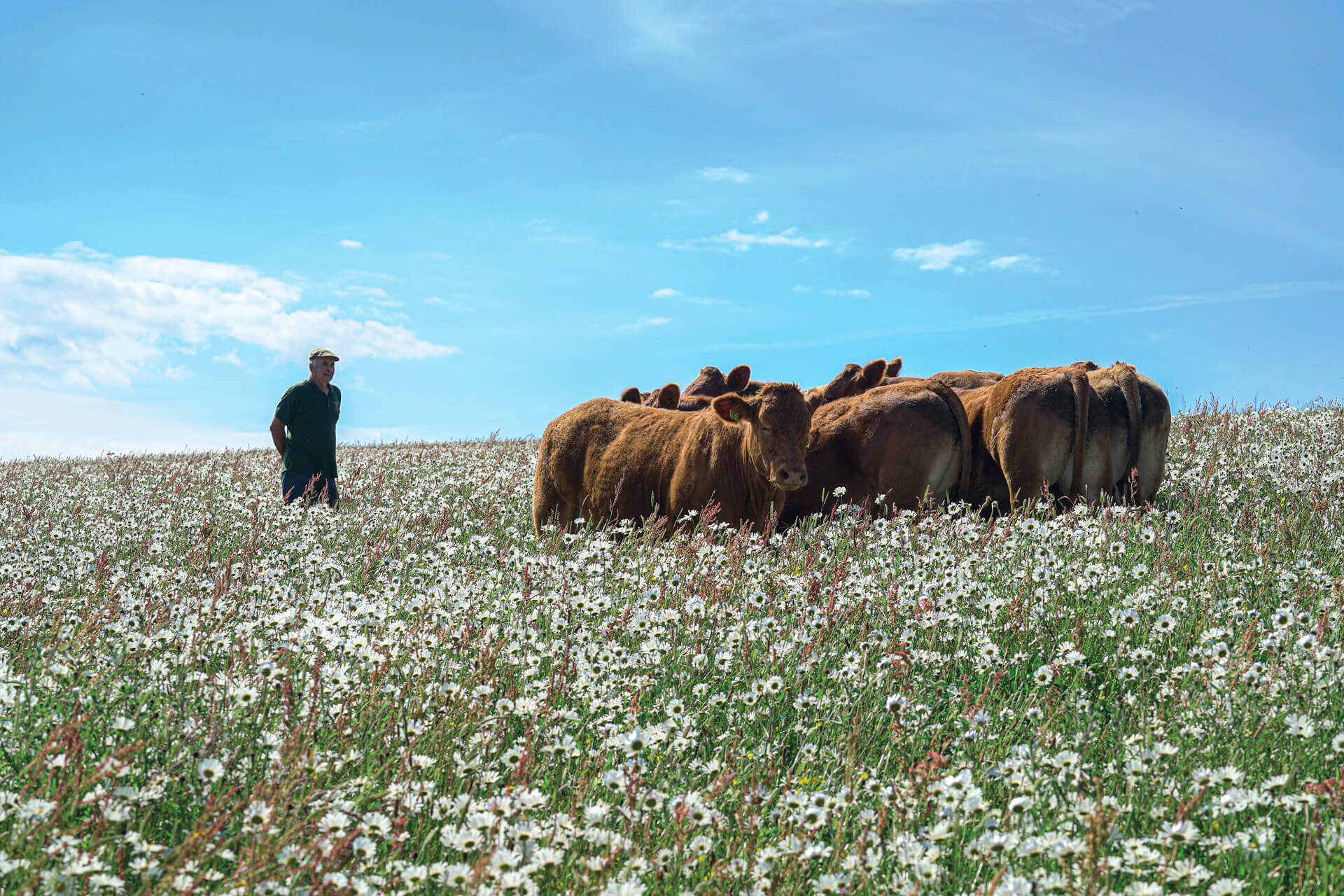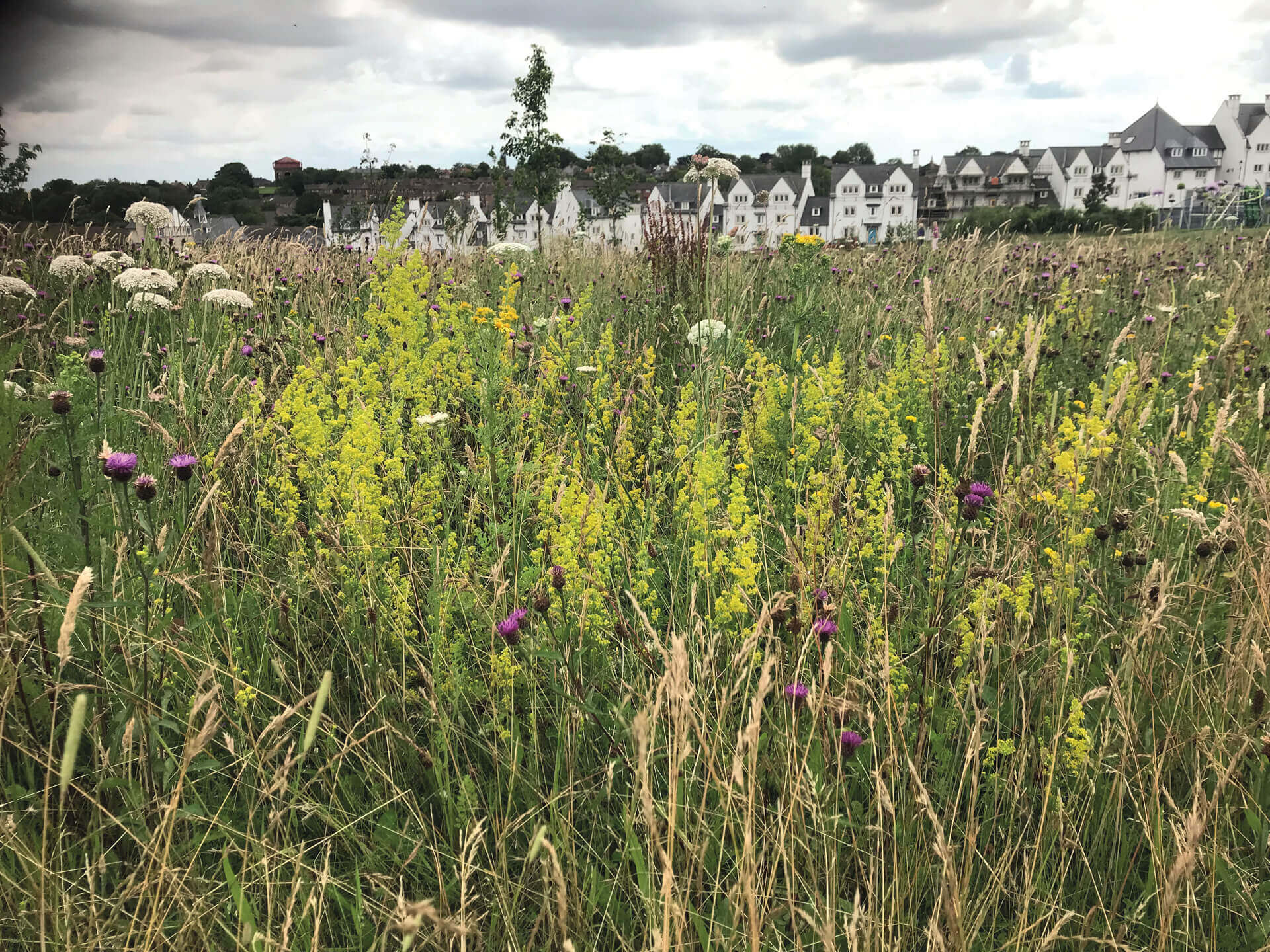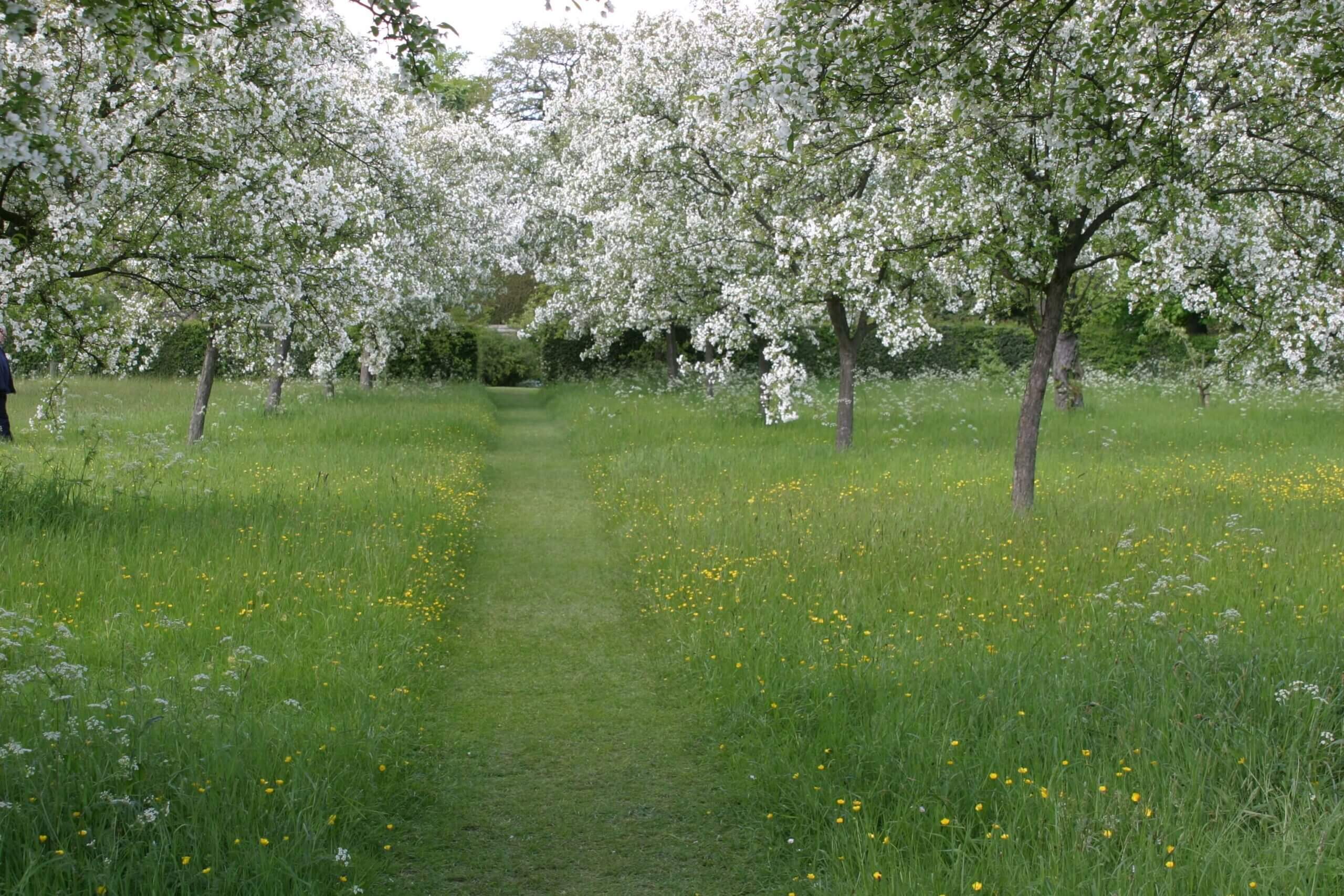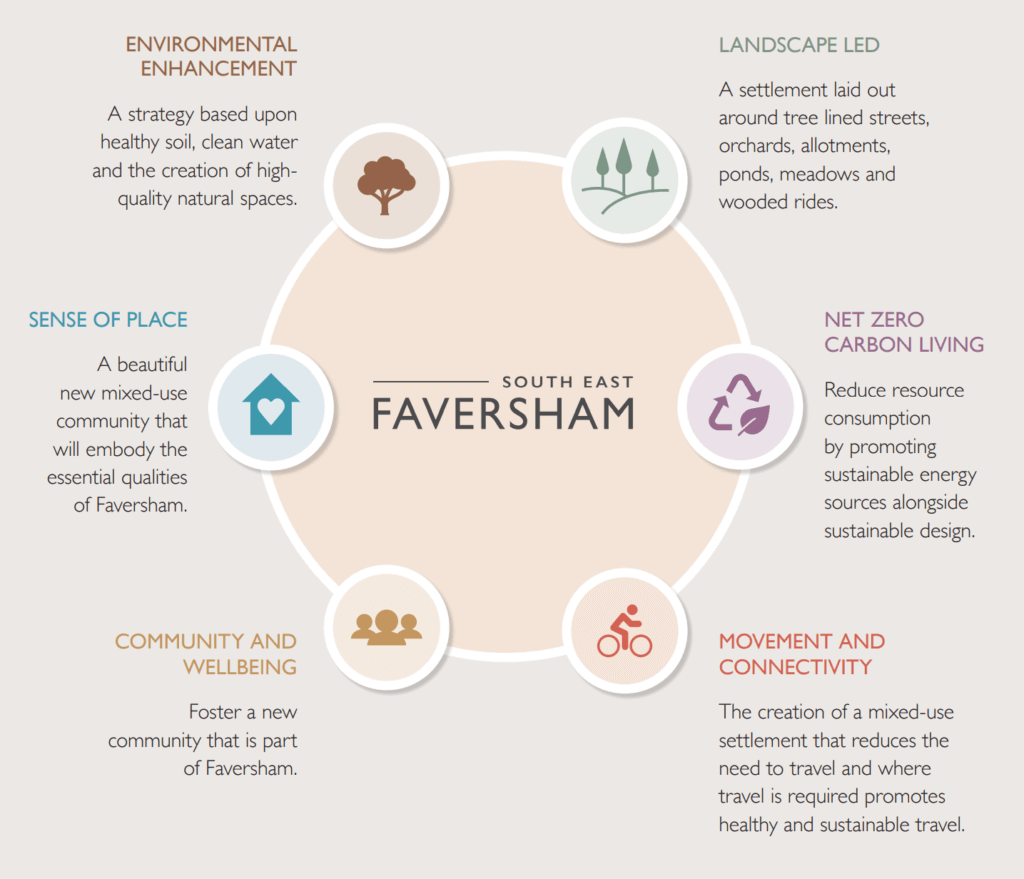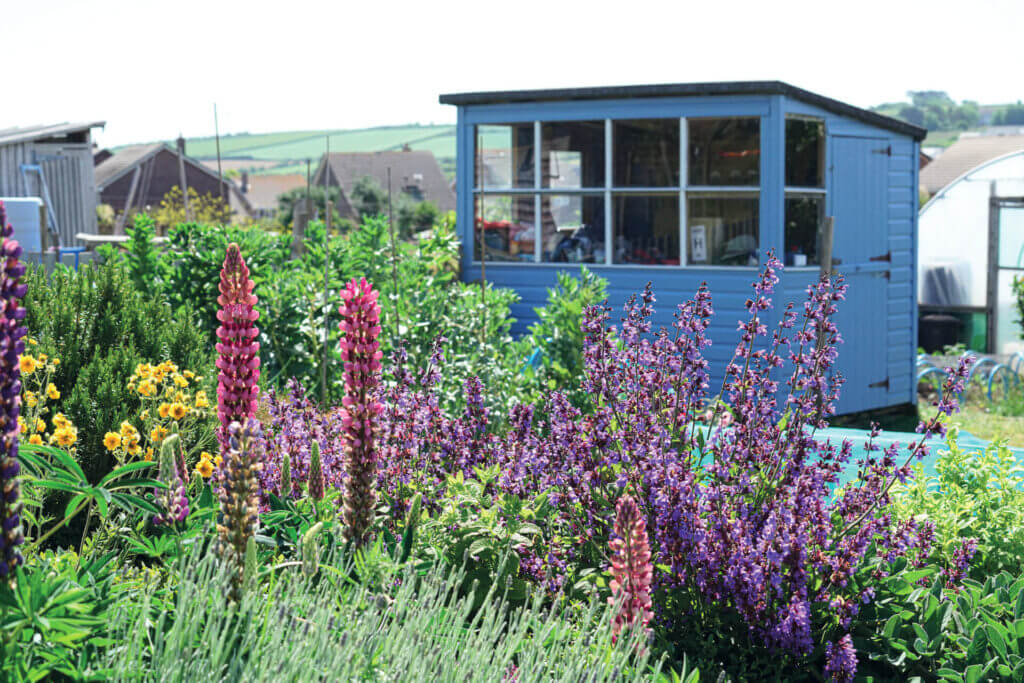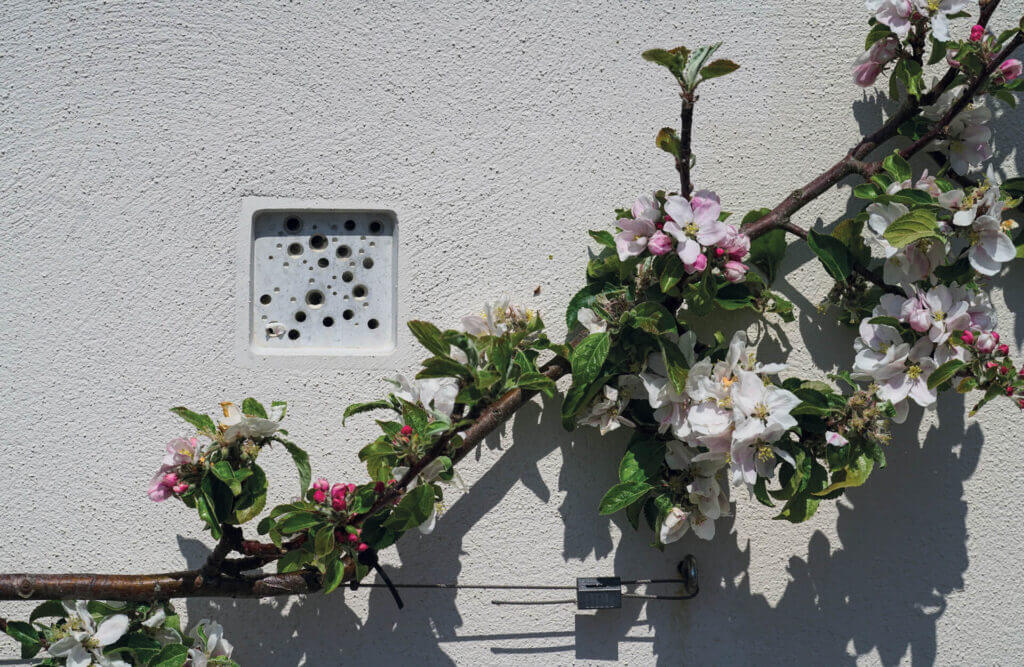The Duchy have long been concerned with the quality of the natural and built environment and strongly believe that true sustainability comes from the creation of places where the whole genuinely is greater than the sum of the parts; where architecture, materials, landscape, ecology, intelligent land uses, beautifully designed public spaces and streets that place people first, connection to food production, and a sense of wellbeing and connection to nature, all combine to create new settlements that will thrive in the longest term.
The proposals for South East Faversham will bring about an environmental enhancement to the site through a strategy based upon healthy soil, clean water and the creation of high-quality natural spaces for existing and future species to flourish.
Over half of the neighbourhood’s area will be dedicated to green spaces including public parks, wildflower meadows, community orchards, woodlands, and allotments. Creating these productive green spaces for amenity and ecology will support the community’s health and wellbeing, and deliver a 20% net gain in biodiversity by fostering new wildlife habitats.
The design approach has also been mindful of the air quality and acoustic impacts of the M2 and A2 Canterbury Road.
To achieve a net zero sustainable new community at South East Faversham the Duchy has set out the following strategy and key principles that will underpin the design approach.
Landscape
Avenues, orchards, allotments, meadows and wooded rides will link the houses together in a shaded, green framework.
Tree roots will be free to connect through a continuous microbially rich soil and surface water will be returned to the chalk aquifer. The air will be filtered by the canopies of leaves and the microclimate will be sheltered by interweaving earthworks and vegetation.
A simple grid of tree-lined streets will open south from the A2 Canterbury Road, along the Watling Street alignment and frame a central green with a cricket pitch and pub. As the proposed settlement stretches eastwards the grid will rotate to follow the contours and open to chalk meadow valleys that descend past the new school to natural ponds. To the south a huge sculptural earthform covered in trees will also help to protect the settlement from noise associated with the M2. To the north a new characterful artisan street with restored Macknade farm buildings will focus on local foods from the surrounding Kent farms.
Ancient drove way diagonals which cut across the grid will be retained to provide intimate pedestrian paths lined by gardens, orchards and allotments.
Footpaths, cycle ways and flowing open spaces will connect houses, workplaces and shops, crossing the railway with a new bridge to the east to the proposed commercial area and aligning with old pedestrian routes through to the centre of Faversham to the north.
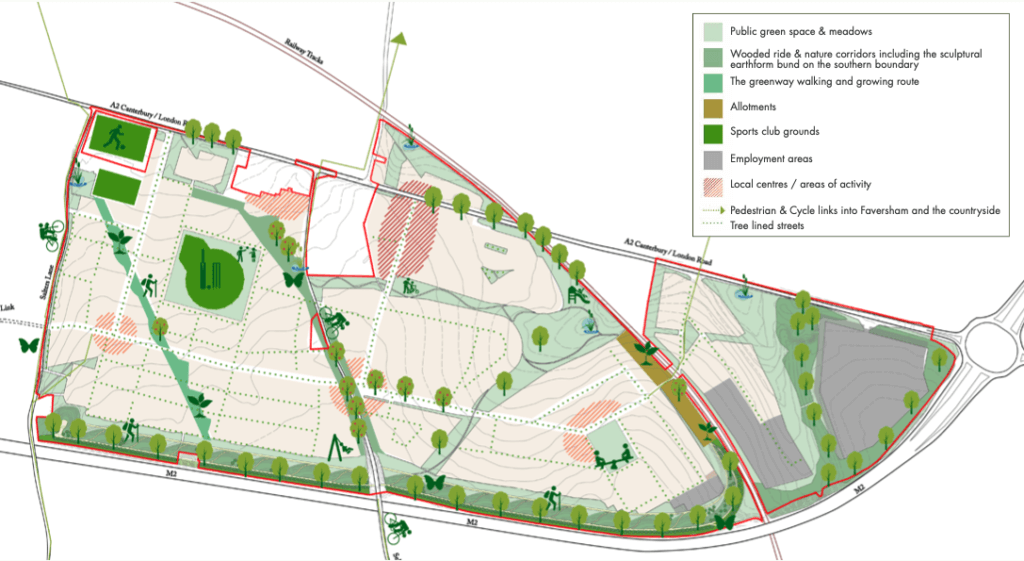
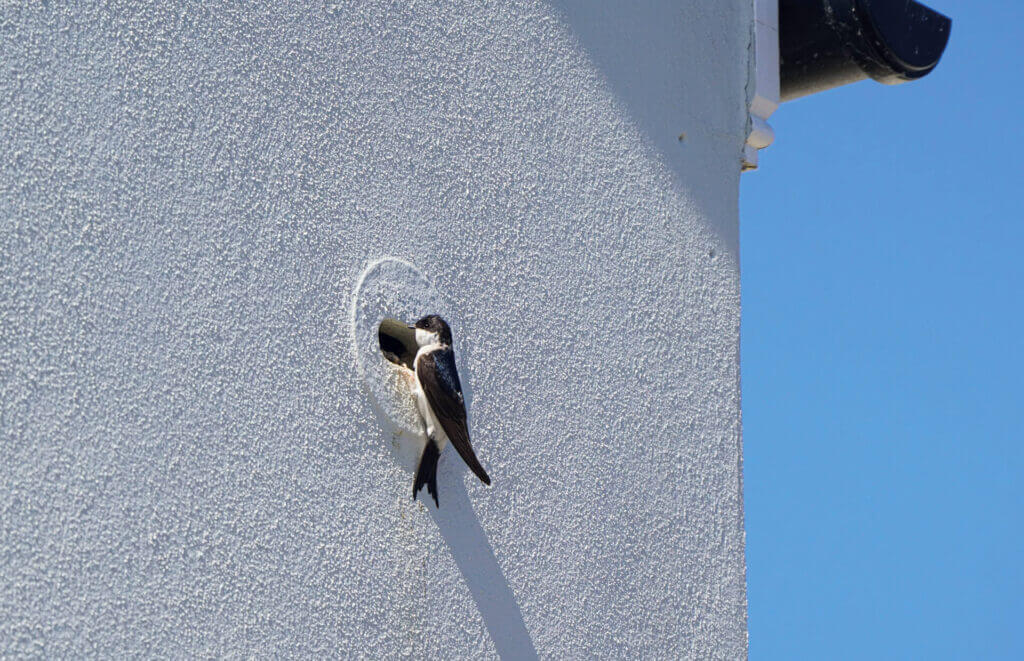
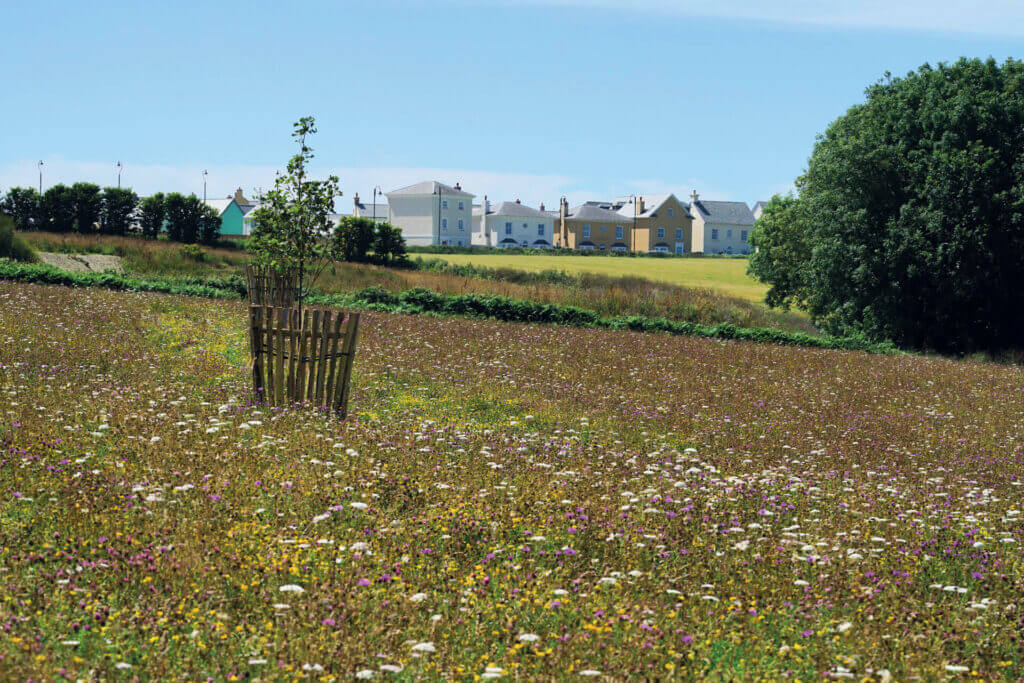
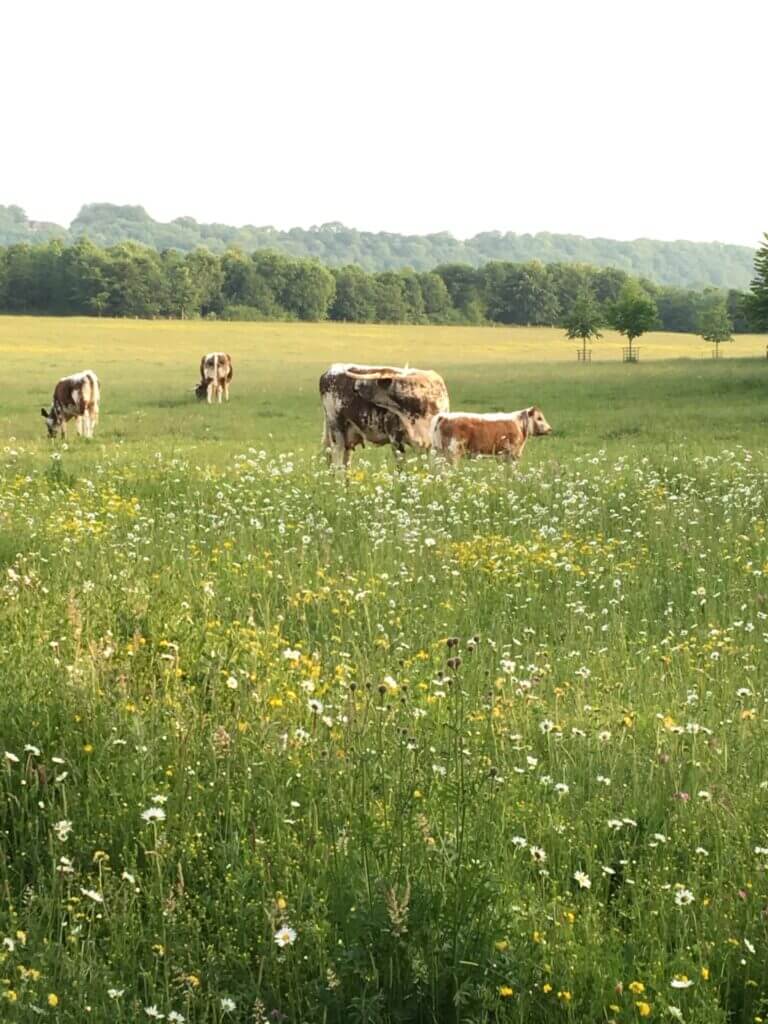
Wildlife
Our surveys confirm that most of the ecological features of importance within the site are restricted to its boundaries, and the long history of intensive agricultural management has hollowed out the interior. Some farmland birds use the interior of the arable fields and bats use the buildings and trees for roosting.
A suite of survey work, starting in 2018 and still ongoing today, followed industry guidance and the scheme has been designed to benefit the existing populations of invertebrates, reptiles, birds, dormice, bats and badgers.
New habitats, such as flower rich chalk influenced grassland, and green corridors will be kept dark to maintain foraging areas for nocturnal mammals.
Impacts to bat roosts will be avoided, when this is not possible, it will be mitigated for.
Farmland birds, such as Skylark and Yellow Wagtail, will benefit from beneficial management in the nearby Duchy Estate where they cannot be accommodated on-site.
The flower rich spaces within the scheme will benefit bees and butterflies, and encourage residents to garden in a wildlife friendly way. The new community will enjoy sharing the space with Swift, and the project will deliver 2,500 new swift bricks.
The combination of new grasslands adjacent to native scrubby habitats comprising of mixed species will create a more complex mosaic compared to the agricultural dominated landscape present today.
This habitat mosaic will deliver over the national requirement for Biodiversity Net Gain and the ambition to go over and above this. This will not only benefit wildlife, but it will create spaces where current and new generations can live in and connect with nature. Through planting locally appropriate, native wildflower-rich grasslands we will create a crucial habitat for pollinators and other invertebrates, they provide foraging habitats and can also act as wildlife corridors.
This approach should nurture and encourage the species of flora and fauna already identified on the land and further enrich this.
Kent and Faversham are renowned for their tradition of fruit production and the planting of fruit trees and orchards will provide an appealing green space, as well as food for both wildlife and local people. If managed using ‘traditional’ rather than modern commercial methods, their biodiversity value increases, and will further support wildlife and habitat within the development.
By creating hedgerows and tree lines we will be strengthening linear features and will increase connectivity between different habitats for species such as hedgerow nesting birds, bats and Hazel Dormice, whilst also providing areas of additional extra habitat especially around the boundary of the development where these species can already be found.

